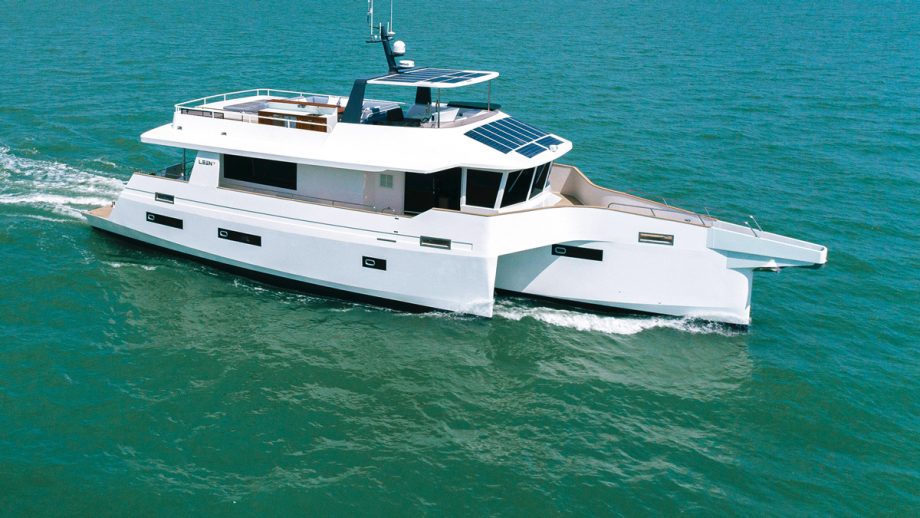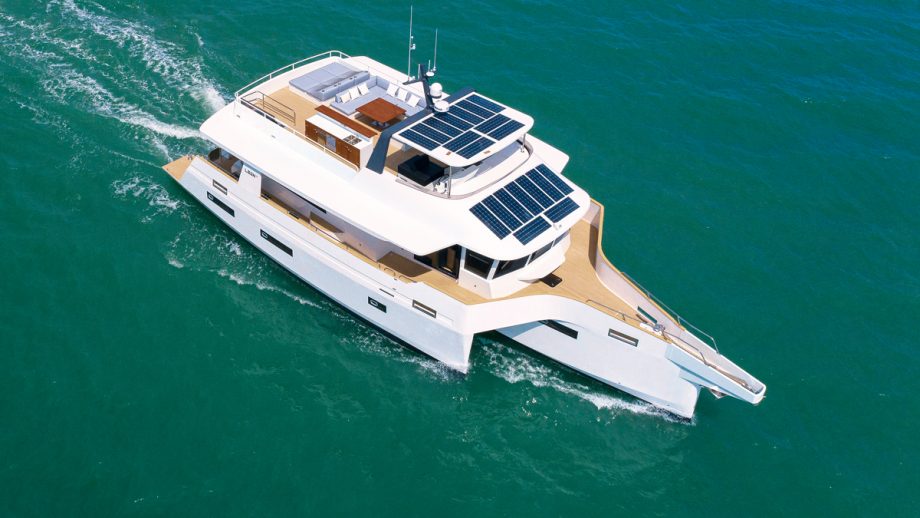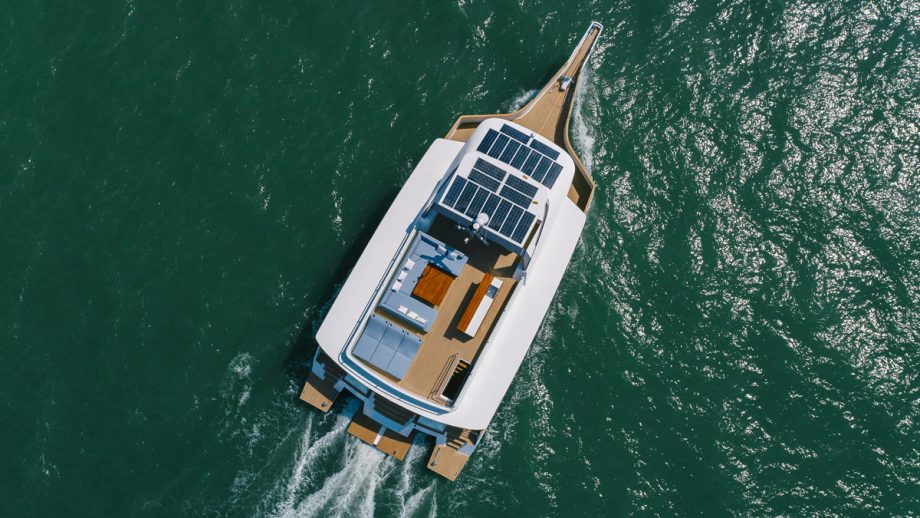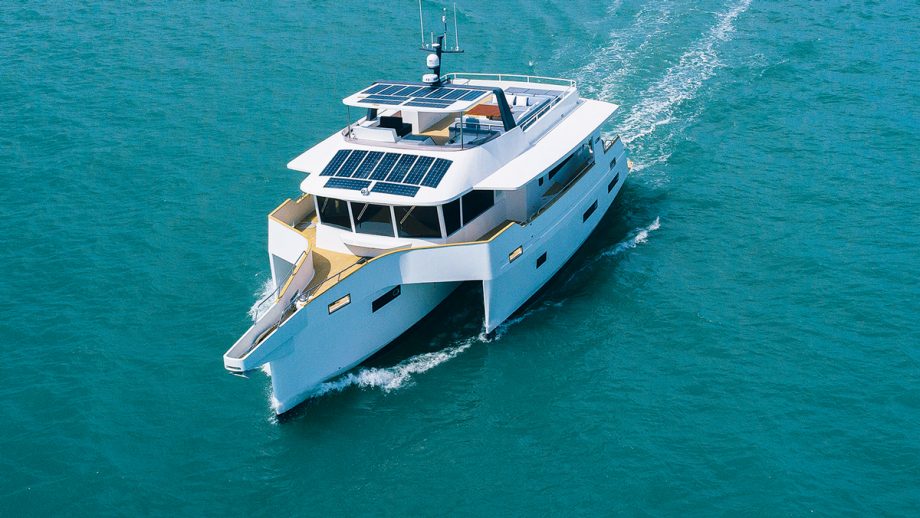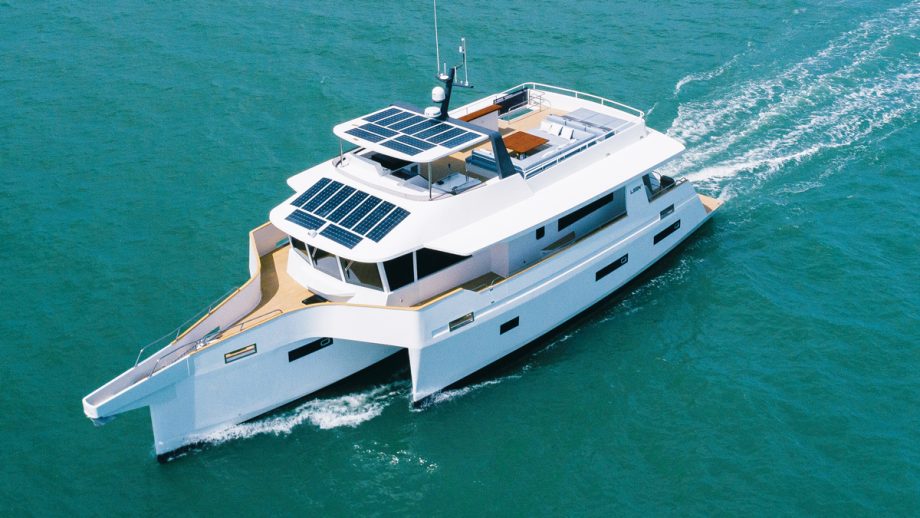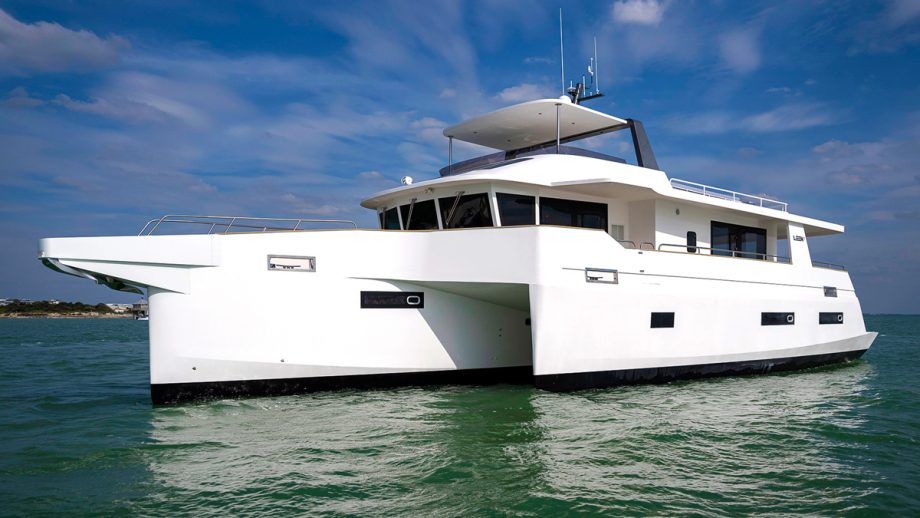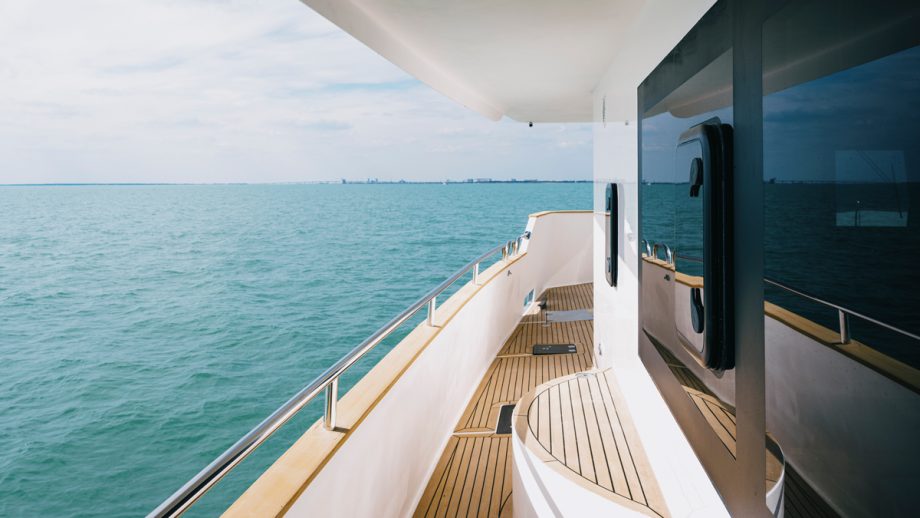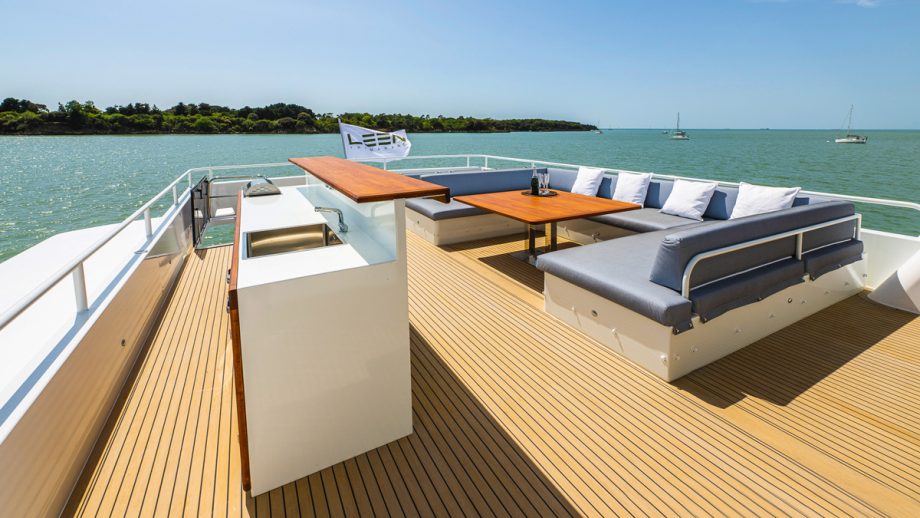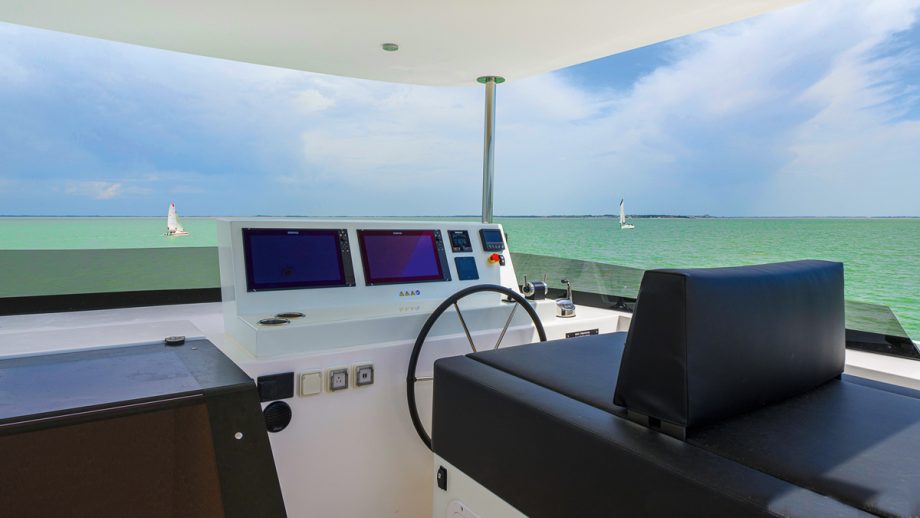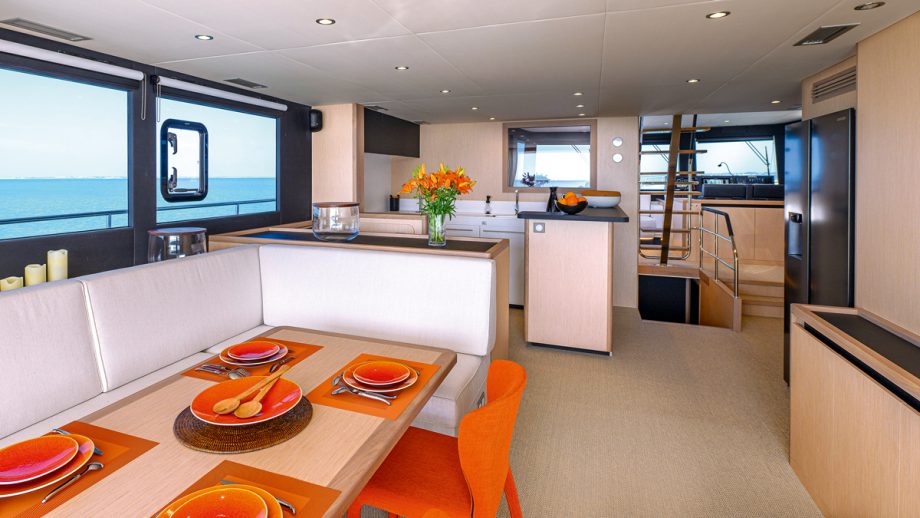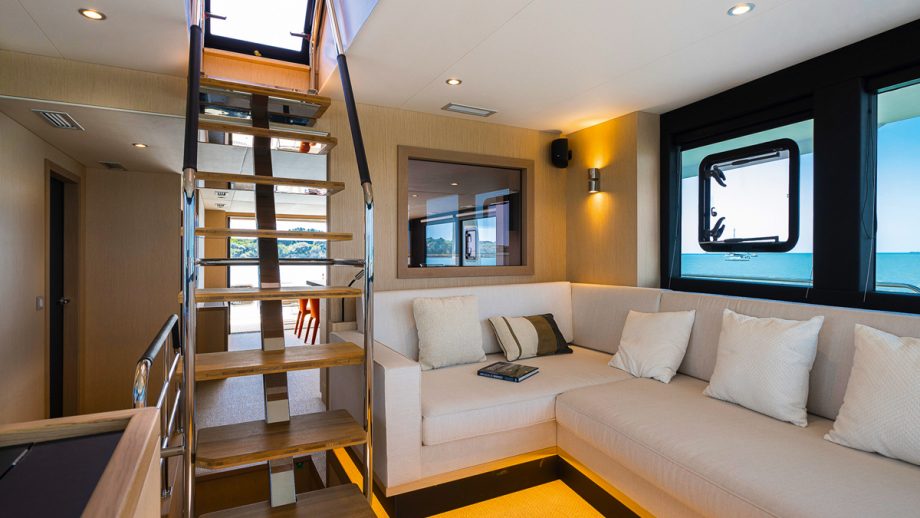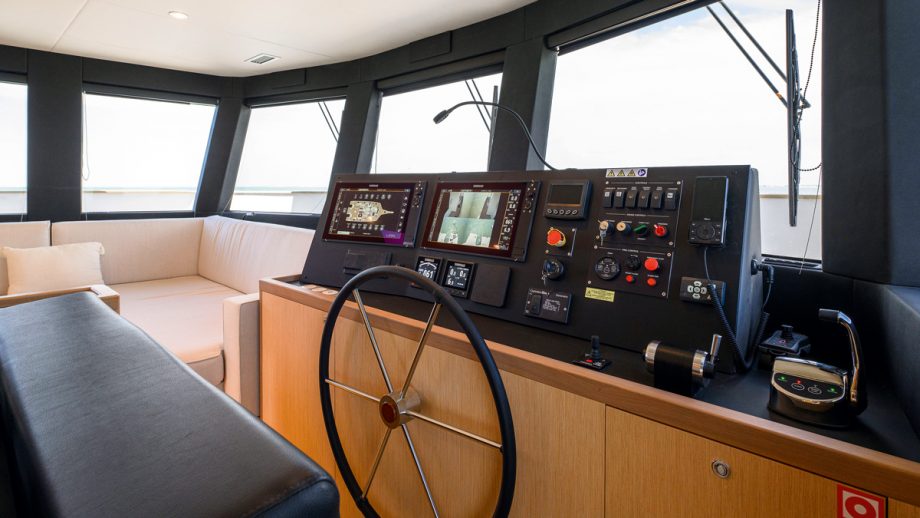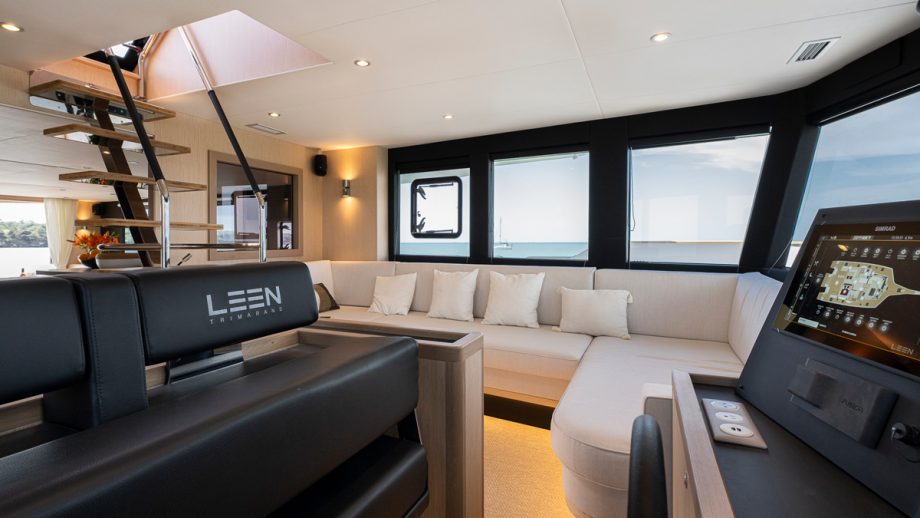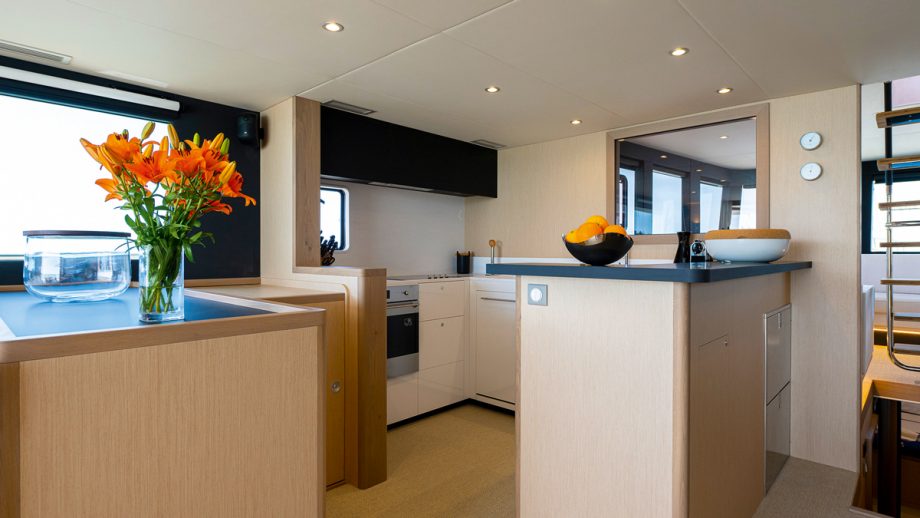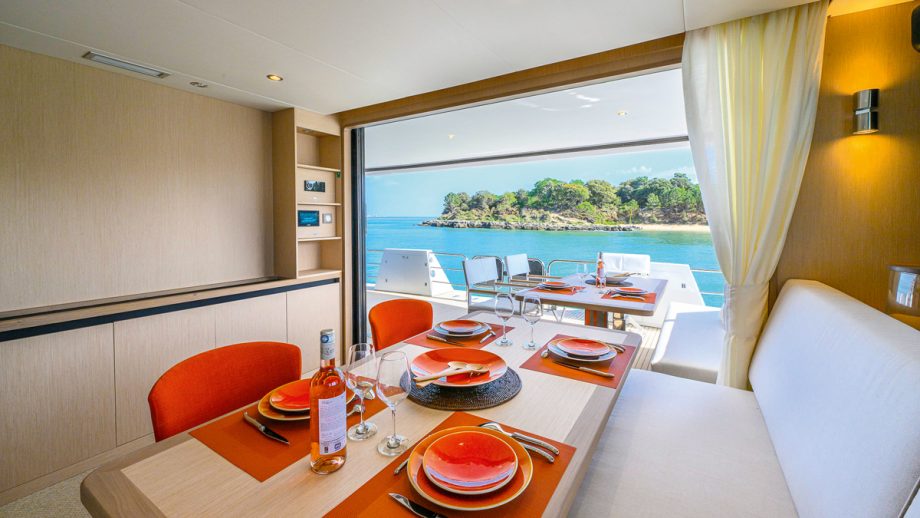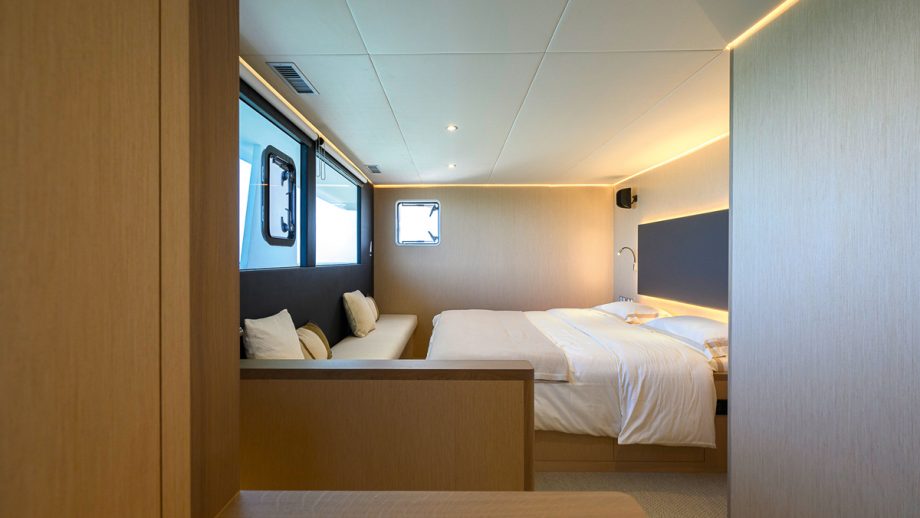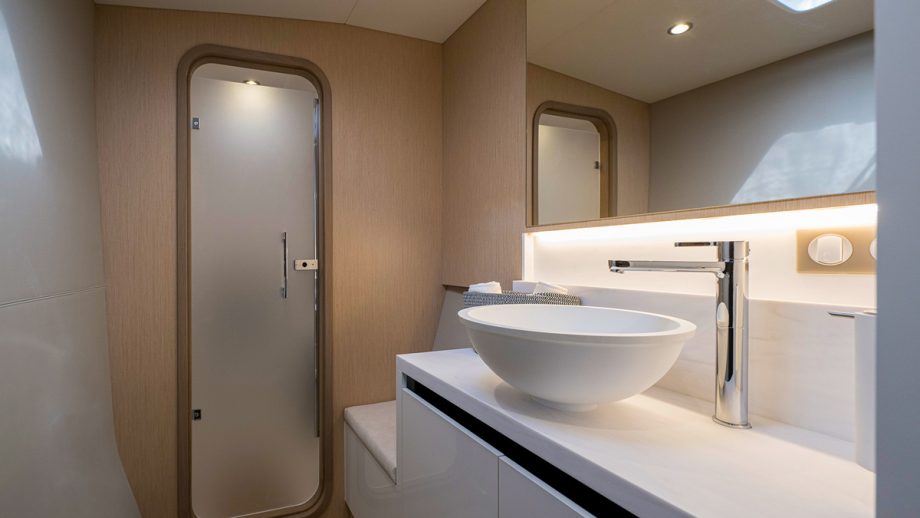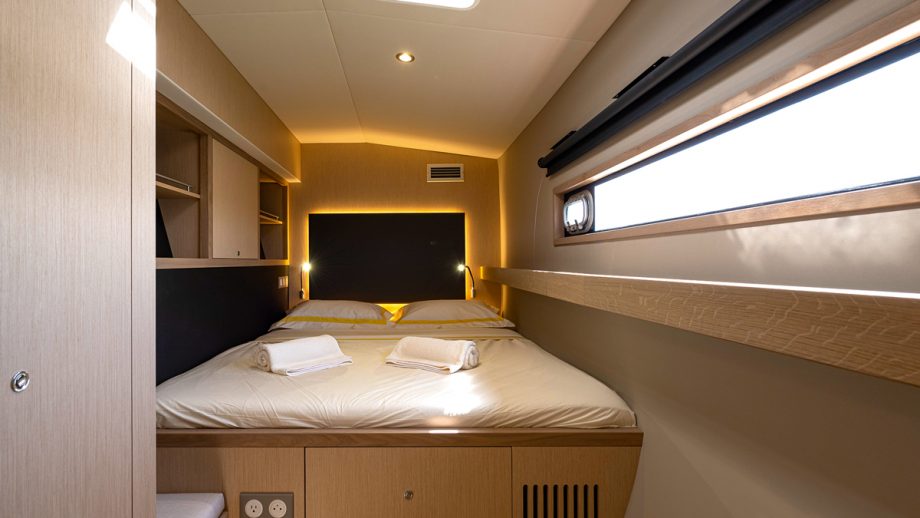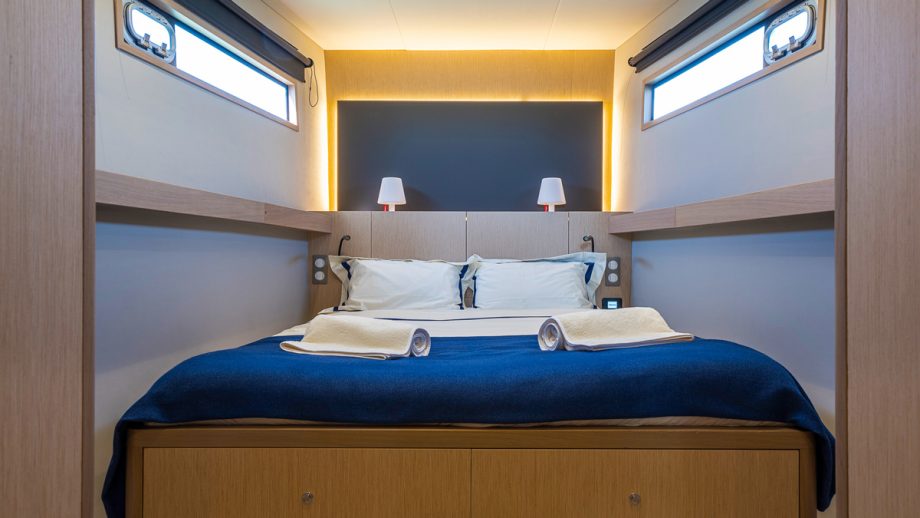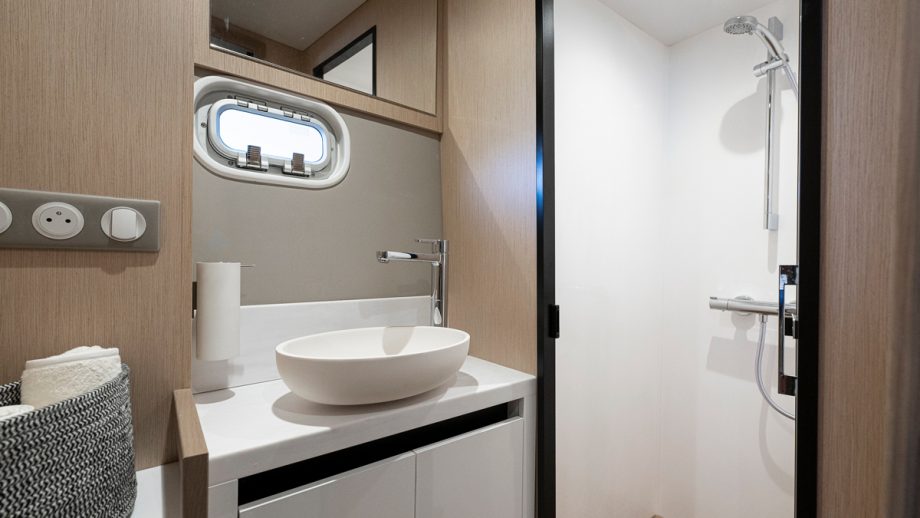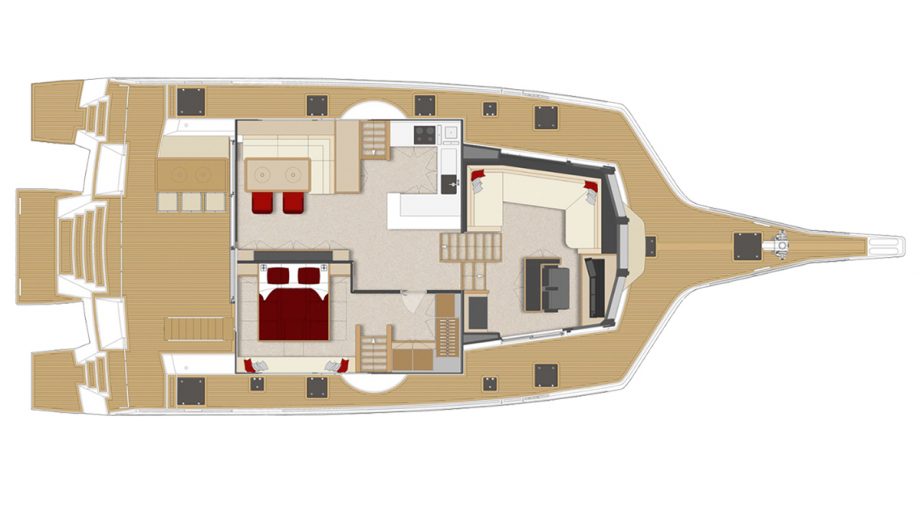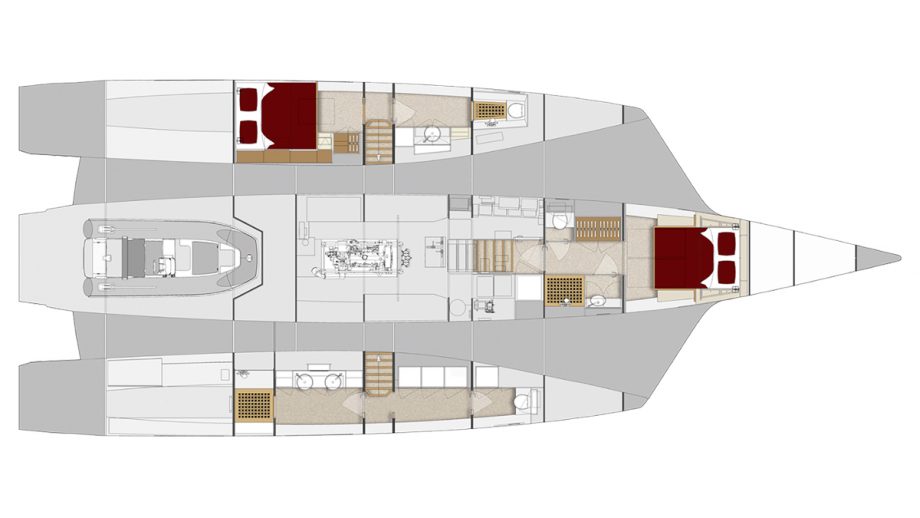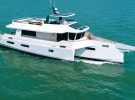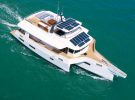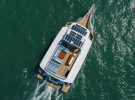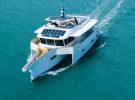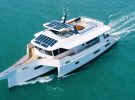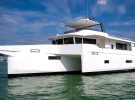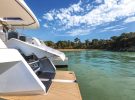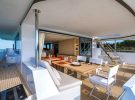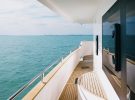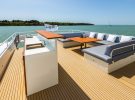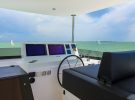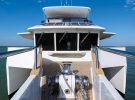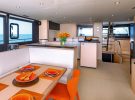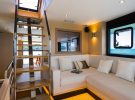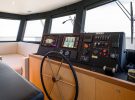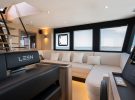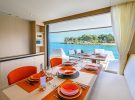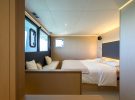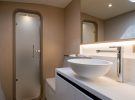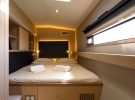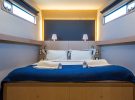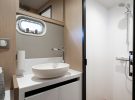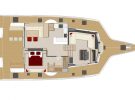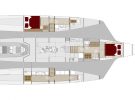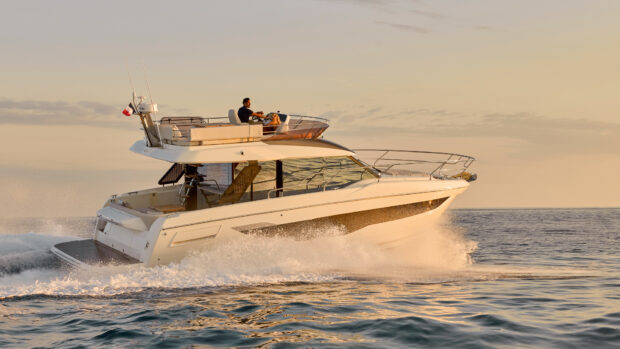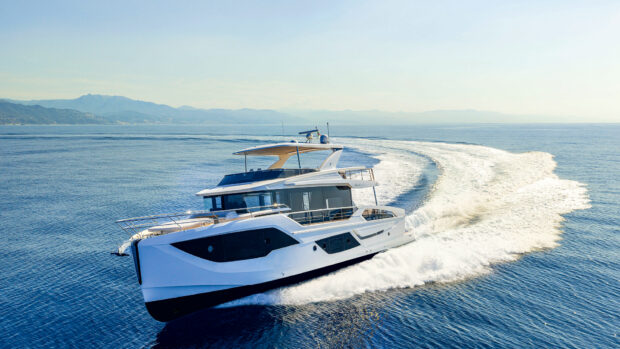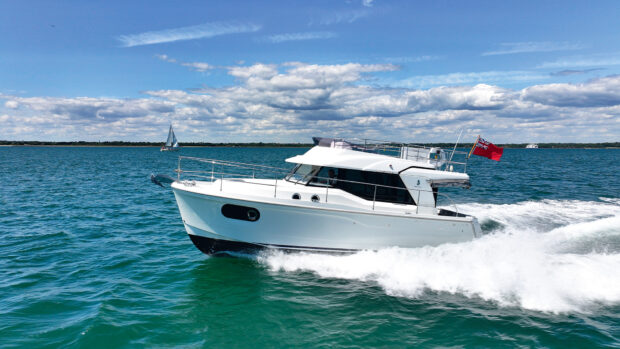Why settle for one hull when you could have three? That’s the question French multihull specialist Neel Trimarans is asking liveaboard cruisers with its super-efficient ocean-crossing Leen 72...
Neel Trimarans has been championing the bluewater sailing trimaran niche virtually unchallenged for the past dozen years. However, recently it has started making
waves in the world of motor boats, too, with an all-new range of power-trimarans under the Leen brand (Neel reversed).
Neel gets its name from Eric Bruneel, who from the early 1980s through to the late Noughties was the longstanding sales manager and latterly CEO of Fountaine
Pajot, the world’s second largest builder of production catamarans (behind Lagoon).
He succumbed to the trimaran spell following a successful campaign with a 50ft ocean racer, an experience that led him to build a 50ft cruising trimaran, initially for himself and then for others too. To date Neel has built around 120 trimarans from 43-65ft and this year will see it deliver another 40.
The first Leen 56 power-trimaran was launched last year and the boatbuilder is already working on a new smaller Leen 50, which should be ready to launch next spring.
In the meantime hull number one of its new flagship, the Leen 72, was handed over in June this year to her American owner, who is planning on cruising it home via the UK, Iceland, Greenland and Canada. We managed to jump on board during its final sea trials to see what makes it so special.
Article continues below…

Fountaine-Pajot Power 67 first look: Taking catamaran luxury to the next level

Prestige X70 launch to kickstart new range of crossover yachts
Power or sail, Leen or Neel, the design credits are the same. Bernard Nivelt at Joubert-Nivelt oversees the naval architecture and exteriors, and Pierre Frutschi creates the interior spaces.
One of the first things to address is the 72’s unusual outward aesthetics, the unspoken elephant in the room. I’m not being unkind, merely descriptive, because to my eye it is vaguely elephantine – the bowsprit being the trunk and the ears those outer hulls.
I don’t see anyone disagreeing with me when I say this is not the prettiest boat afloat. That said, few genuine bluewater boats are, their priorities lie elsewhere, trading elegant aesthetics for long-range comfort and robust sea-keeping. And as we’ll discover the Leen 72 certainly delivers on those promises.

Each of the three hulls are made from vacuum infused flat panels bonded together
If it looks a little slab-sided, that’s because it is. Its hulls are built from vacuum-infused flat panels that are bonded together to create the size required.
It’s an unusual boatbuilding technique that lends itself to the production of long and relatively narrow hulls, although the principal benefit is minimal investment in otherwise expensive mould tooling.
Leen 72 design: Size matters
Our sea trial was departing from the pontoons at Port des Minimes, La Rochelle, very close to the company’s sheds in the Old Port. The Leen 72 was moored there amid hundreds of mass-market sailboats and motorboats of less than 50ft.

Wide side-decks, Portuguese bridge and big top deck overhangs give the impression of being on a mini cruise ship. Note the seats halfway along each side-deck that create headroom for the stairs beneath
In that crowd, the Leen 72 loomed very large. The distance from the waterline to the cap-rail is getting on for 9ft. Then there’s the maximum beam of 29ft, roughly 60% wider than most monohull motoryachts of a similar LOA.
Three transoms complete with three short bathing platforms and three sets of steps, plus the two tunnels between, are the giveaway that this is something out of the ordinary. The design really comes alive once you’ve climbed aboard. To me it is all rather reminiscent of a cruise ship, albeit scaled down.
Those deep bulwarks, generous side decks with overhang protection, substantial buttresses, and the luxury of a Portuguese bridge in front of those three raked-forward wheelhouse windows, all give the impression that you’re aboard a much bigger vessel.

I like the quirky hemispherical seats halfway along the side decks, too. They are not especially comfy but they certainly qualify as posh in the original sense of the phrase, port-out starboard-home. They are there because the space within them provides the headroom for stairs into the outer hulls.
Note how much shorter those outer hulls are in relation to the main hull. Interestingly Bruneel tells us they have two principal functions, but only one of those has any influence on their length.
One is to provide stability, which is ultimately about adding buoyancy and resisting heeling forces, but that does not require them to be any particular length. The other function relates to usable volume, which means they only need to be long enough to be useful in terms of the space they provide.

The bow-platform is quite a statement. It juts out belligerently 4ft or so beyond the stem. In the marina I stepped over the substantial Lofrans horizontal windlass and walked out between double anchor chains, their staggered fairlead slots and the attached anchors – all very explorer – and confess I had to fight a fleeting impulse to do a ‘Kate Winslet’.
Peering over the front of the platform soon stopped me. It’s quite a drop. Suffice to say you would not want to try that at sea given that the stainless-steel guardrails stop a few feet short of the tip. At the other end of the main hull is a cavernous tender garage.
Leen 72 interior: A real space ship
The flybridge is vast, essentially a 50m2 blank canvas, with outside steps leading up to it from the aft cockpit as well as internal ones from the bridge. You can choose whatever you like when it comes to furniture and how much of it you want covered by the hardtop.

50m² flybridge can be customised to suit
The owner of this first one opted for a short hardtop that covers just the forward quarter of the deck, including the upper helm. This is offset to starboard and features a large-diameter sailboat-style wheel and chunky walkaround fore-aft bolstered seats on both sides.
The majority of the space behind is dominated by a C-shaped dinette to port and a row of sunbeds aft. Then to starboard there’s a very long island galley module – too big to be called a wet bar.
The main-deck accommodation feels more like a modern apartment than a yacht, probably because there is little obvious symmetry to the interior layout.

As with other large multihulls the galley is closer to a domestic kitchen than a ship’s galley in terms of space and appliances. Note the large American style fridge freezer to starboard
Walk in through the aft deck doors, which slide all the way open to create one big inside-outside space, and you are greeted to port by an L-shaped dinette and a galley-kitchen amidships.
Opposite is a large American-style fridge-freezer and the door to the owner’s cabin, which occupies much of the starboard side of the main deck. This is split into two zones with a dressing area forward and a transverse bed aft, enjoying fabulous views out through the picture window opposite.
A short flight of stairs drops down from here to the ensuite bathroom. The bridge is open to the saloon but up a couple of steps and includes a very inviting C-shaped sofa to port, a marvellous hang-out when on passage, given the elevated views you’ll enjoy from this lofty position.

The large diameter vertical wheel is a reminder of Leen’s sailboat origins
The main helm station is to starboard and includes another large diameter wheel, bolstered double bench seating, and a very convenient large sliding door to the starboard side deck. A desk behind the helm doubles as an owners’ study and ship’s office.
Amidships, a staircase descends forward to an ensuite VIP cabin in the forepeak. It is unusual for having two doors before the bedroom, between which is a heads compartment to port and a shower-room to starboard.
It was the owners’ choice to provide day-heads access without disturbing anyone in the cabin or vice versa but when you’re caught between those doors, it’s surprisingly easy to forget which way is forward and which aft.

Main deck owner’s cabin has a transverse bed
This first Leen 72 has a three-cabin layout, which means there’s also another ensuite double in the port hull. This has its own stairs just aft of the galley.
The alternative four-cabin layout provides four ensuite doubles in each corner of the lower deck – one forward, one aft, and one in each outer hull – this frees up the main deck for a more conventional full-width saloon, although the tender has to live on the flybridge instead of in a stern garage.
Hybrid drive
This first Leen 72 has a hybrid installation. There is one single diesel engine – a 330hp Cummins QSL 9 – that’s hooked up to a straight shaft and prop and resides in its own palatial engineroom in the middle of the lower deck.

The main engine is flanked by twin stainless steel fuel tanks
Plus there are independent electric motors, shafts and props in both floats. Essentially the wing motors have three roles – easy manoeuvring in harbour, emissions-free capability (for a limited range) and as back-up propulsion in case of a fouled prop or engine issue.
There is one other way this model resembles a cruise ship and that’s its ability to cross oceans. Trimarans like this are extremely fuel efficient because their hulls generate minimal drag.
Using just the main engine, and running at around eight knots, there is sufficient range to cross the Atlantic non-stop and with the speed kept below seven knots there should be scope to cross the Pacific.

At those speeds it will only be burning around one litre of diesel per nautical mile and there’s capacity aboard for 5,000 litres. Even at a 10-knot fast cruise you should be able to run this yacht for 2,500nm before having to fill up, as the burn rate would still only be two litres per mile. Being in a rush with the Leen 72 certainly doesn’t pay.
The hull efficiency plummets when speeds are nudged north of 10 knots. Indeed, Eric Bruneel is the first to say “don’t do it, because going above 10 knots makes no sense at all”.
It will use four times the fuel to push out to a maximum speed of just under 13 knots – yep, roughly four times the consumption for only 30% more speed. Even with the diesel engine running and coursing along at 10 knots, the Leen 72 is extraordinarily quiet.

Width of the inside dining space is limited by the main deck owner’s suite to starboard
I have been on less noisy motoryachts but those were built in Holland and well over twice the length and many times the price. Another important consideration is the ride. Trimarans drive through the water rather differently to catamarans.
Obviously catamarans are inherently more stable than monohulls, but under certain conditions they can deliver a more uncomfortable onboard experience – a less predictable motion often referred to as the ‘bobbing cork’ effect.
The trimaran’s centre of buoyancy helps provide something in between – maybe a best of both worlds – certainly something softer and more gentle than a catamaran while retaining that inherent multihull stability.

The centre hull conceals a tender garage large enough for a Williams 435 Sportjet
We didn’t get a chance to sample anything beyond calm seas during our sea-trial in the Pertuis d’Antioche, the strait between Ile de Ré and Ile d’Oléron, just the odd wake of a fishing vessel to unsettle us momentarily, but even then we could sense this vessel rides rather than reacts to waves.
Unfortunately, a burnt-out relay meant one of the electric motors was out of action for our sea trial, which prohibited us sampling quiet-mode and generator-only performance. When they are working, you just slip the main engine into neutral and switch to the electric throttle levers.
Those motors have a lot of torque and despite the high topsides should manoeuvre the boat with ease thanks to their wide spacing. There’s also a MaxPower bow thruster on the centre hull should it need even more of a sideways push. According to the yard’s own figures, a cruising speed of five knots is possible running on the wing motors alone.
Running in zero-emissions mode at that speed, which means relying on the lithium-ion battery bank alone, will give around 1.5 hours’ silent cruising, but with the 22kW generator running the fuel burn is around seven litres per hour or 1.4 litres per nm, which in theory equates to a range of over 3,500nm.
Depending on hardtop choices, solar panels can also help trickle-charge those batteries so there is the potential for more autonomy given there is plenty of sunshine. The solar panels should also be able to keep pace with hotel demands during the day if the air conditioning is switched off.
Price as reviewed:
£2,340,000.00 inc. VAT
Verdict
Alas, we didn’t see the Leen 72 in pristine boat show condition. It wasn’t quite finished and the yard was rushing to get her ready for the owner’s imminent arrival. But what we could see clearly was this model’s potential, not only in terms of what it will be once completed but where it can take you. It won’t be for everyone, even those with €3 million to spend on a motoryacht, but for the more discerning owner with serious cruising ambition and an appreciation of space, efficiency and individualism, the Leen 72 is a welcome new addition to the market.
Details
Starting price: £2,100,000 (ex VAT)
LOA : 72ft 0in (21.95m)
Beam : 29ft 0in (8.84m)
Draught (full load) : 4ft 6in (1.37m)
Fuel capacity: 5,000 litres
Water capacity: 1,000 litres
Displacement (light) : 32 tonnes
Displacement (full load): 41.5 tonnes
Test engine : Single 330hp Cummins QSL 9
Top speed on test : 12.7 knots
Cruising speed: 10 knots
Cruising range: 2,500nm
Fuel consumption: 18lph
Noise: 62 d(B)A
Generator: 1x 22kW Cummins-Onan
CE/RCD category: A
Naval architecture/exterior: Bernard Nivelt
Interior design: Pierre Frutschi



